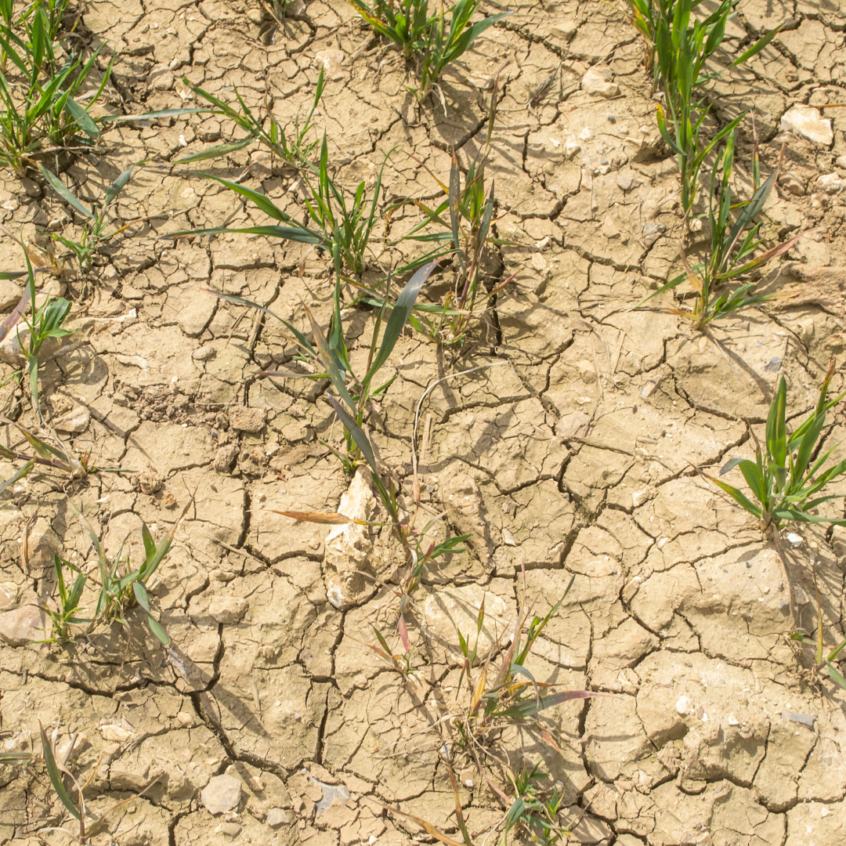At last! A refreshing rain has fallen on both Montgomery and Grimes Counties, which are in the midst of an exceptional drought. It is perhaps the first step out of this drought. According to the weather service, Montgomery received 1.25″ of rain and 0.8″ fell in Plantersville. Obviously, neither was enough to bring us out of a drought, but we our hearts rejoice at the precipitation. Today let’s look at the effects of drought and what we can do about it.
Extreme Drought
Parts of Montgomery remain in the lesser category of “Extreme Drought.” If you are familiar with the categories, it is also called D3. During this phase, chances of wildfires grow, financial burdens increase, the need to supplement feed to livestock surge, and reservoir levels are a concern. Unfortunately, a wildfire consumed over 4,400 acres north of Montgomery County in Walker County. As of the latest report with The Texas Tribune, firefighters have it 95% contained. In addition, Lake Conroe is currently 90.1% full. Three months ago, it was completely full. Clearly, the drought is affecting the Lake Conroe area in an adverse way.
Exceptional Drought
All of Grimes County and the rest of Montgomery County have now entered the D4 category, which is also called “Exceptional Drought.” This is the worst and most severe category. During an exceptional drought, boat ramps close and obstacles appear in bodies of water. At the same time, the water table decreases, the chances of fire climb higher, and farmers and ranchers really suffer.
Excruciating Problems for Agriculture
While the effects of an extreme or exceptional drought affect all residents, the farmers and ranchers in the area suffer excruciating problems. A local rancher explained that he typically gets two cuttings of hay each summer of about 200 round bales per cutting. This year because of the lack of rain he only was able to get one cutting and the yield was almost half. And, he is already putting out hay because there is nothing for his cattle to eat. He usually waits until after Thanksgiving to put out his first bale.
So what are his options? He can purchase hay from other states, he can choose to purchase supplemental feed, or he can start decreasing his herd size through local sale barns. The problem is supply and demand. With no hay here and the high need, both hay and feed prices are high. As more ranchers sell off cattle, then the prices will fall. They are caught between a rock and a hard place.
This is only one rancher in our area, but he is not the only one facing similar decisions. Farmers are also suffering, too. Crops fail to germinate and even the yield for irrigated crops declines. Many will decide not to plant at all and allow their fields to lie fallow. So what can we do?
Essential Prayer
Jeremiah 14:2 states, “Do any of the worthless idols of the nations bring rain? Do the skies themselves send down showers? No, it is you, LORD our God. Therefore our hope is in you, for you are the one who does all this.” Please pray for more rain, but also lift up farmers and ranchers in Texas as the drought spreads across much of the state.
The refreshing rain of the past two days is the first step out of this drought, but we have a long way to go. Continue to pray for rain and lift up those in agriculture. May the Lord protect us from more adverse conditions as they could definitely worsen. Let’s all join together in this call to action.

